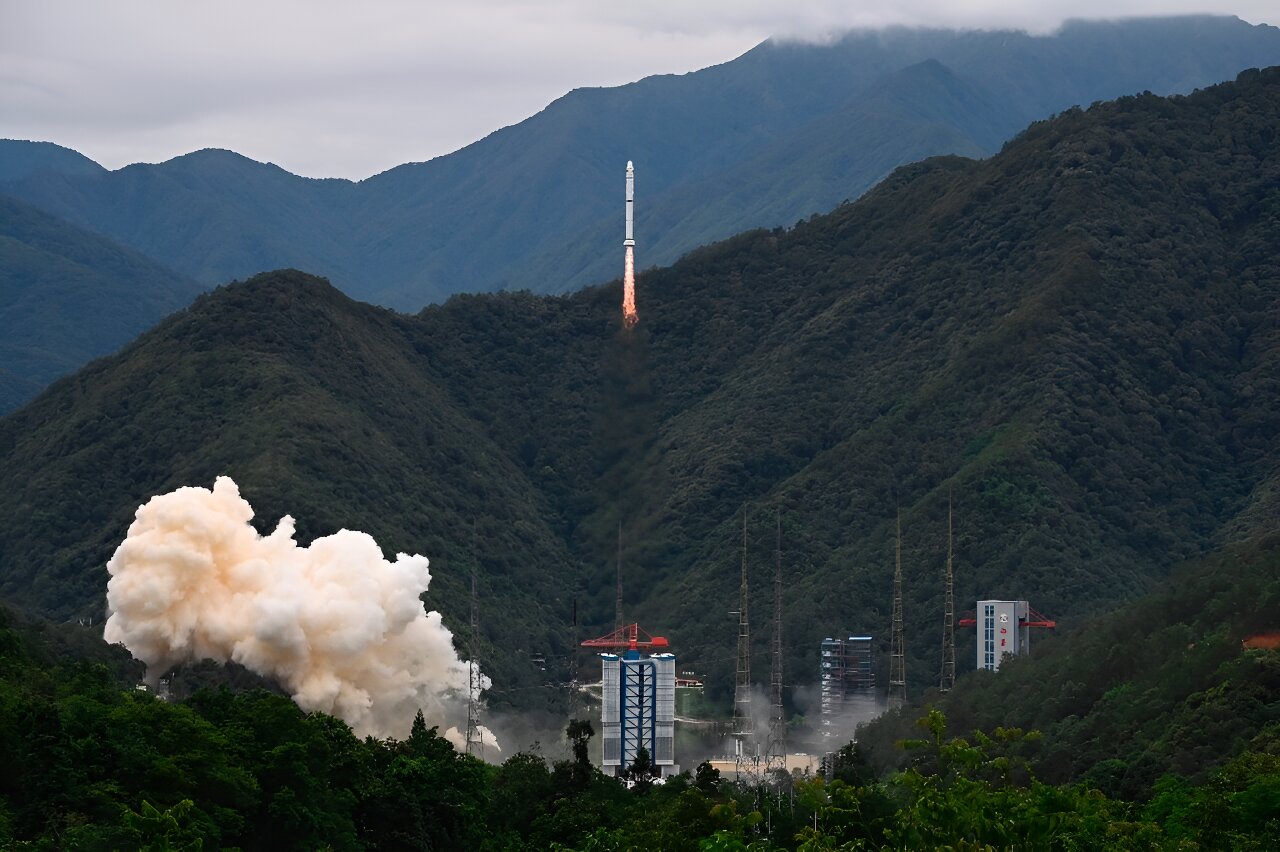
Launch of SVOM on June 22, 2024 (Credit: AFP)
This space mission, to which the APC laboratory (CNRS IN2P3, Paris Cité University) made a major contribution, will scan the sky for transient astrophysical phenomena, in particular gamma-ray bursts, signatures of the explosion of massive stars and the fusion of compact objects.
Although the sky may appear unchanging at first glance, it is in fact in a state of perpetual change, punctuated by transient and variable astrophysical phenomena. These phenomena, particularly visible in the X-ray and gamma-ray domains, reveal a dynamic Universe associated with stars described as compact objects, in particular black holes and neutron stars, the remnants of stellar evolution.
The SVOM mission will be dedicated to the study of the transient sky, with gamma-ray bursts as its main focus. These are the brightest events ever observed in the Universe. They are associated with the collapse of the most massive stars or the merger of two compact objects (neutron stars and/or black holes). These bursts of gamma rays last only a few seconds and are likely caused by the birth of a black hole, with jets of matter forming on either side and propagating at speeds close to that of light. Besides providing a better understanding of the physics governing the most extreme celestial bodies in the Universe, observing distant gamma-ray bursts also helps us understand the history of the Universe and the formation of the first stars. However, studying these extremely brief events poses several observational challenges. Indeed, they can appear anywhere in the sky at any time. To increase the chances of detecting such a gamma-ray burst, it is necessary to be able to continuously observe a very large portion of the sky. This will be made possible by the ECLAIRs instrument on board SVOM, designed by French researchers and engineers from the IRAP, the CEA, the APC, and the CNES. To locate the origin of gamma photons, ECLAIRs uses a sky imaging technique known as coded mask imaging, with the key component designed at the APC laboratory (https://u-paris.fr/un-masque-code-pour-sonder-le-passe/ in French) The scientific ground segment includes the scientific data processing pipeline for ECLAIRs data collected on the ground by X-band antennas, developed at the APC with the support of the Pole Spatial Université Paris Cité (in French) and the CNRS/IN2P3.
While the core of the SVOM mission is to ensure the observation of several dozen gamma-ray bursts per year, it is also a tremendous tool for probing the high-energy sky. Thanks to the mission's general program, which is open to the entire scientific community, researchers will be able to observe a wide variety of transient or variable phenomena. Additionally, the satellite will be capable of responding quickly to alerts triggered by other observatories. These two programs, in which the APC laboratory plays a central role, will make SVOM an essential partner for the international scientific community. These research programs have been prepared for a long time within our laboratory and have benefited from financial support from LabEx UnivEarthS for the preparation of observations and the coordination of the scientific community interested in the transient sky.
After the launch of SVOM from the Xichang base, the so-called in-flight commissioning phase begins, marked by the activation, testing, and calibration of the instruments. These preliminary steps are crucial to ensure the reliability of the data and thus prepare the ground for the upcoming scientific exploitation. The first results from SVOM, expected by the end of the year, promise an unprecedented perspective on the cataclysmic Universe.
View of the flight model of the ECLAIRs telescope (Credit: CNES/APC/CEA)
APC members involved:
Chercheurs
- LACHAUD Cyril (responsable)
- GOLDWURM Andrea
- COLEIRO Alexis
- CANGEMI Floriane
- FOISSEAU Antoine
Technical and administration
ECLAIRs coded mask team
- GIVAUDAN Alain (Project manager)
- KARAKAC Maurice
- BERTOLI Walter
- DHEILLY Stéphane
- JUFFROY Corinne
Pipeline project team
- CAVET Cécile (Project manager)
- BACON Philippe
- JIMENEZ-PEREZ Hugo
- BELLEMONT Nicolas
- DODU Fabrice
- LE STUM Sébastien
Administrative service
- PAVILI-BALADINE Lydie
To go further:
IN2P3 Twitter feed
CNRS Youtube channel
CNRS News
Article IN2P3 (in French)
CNRS post-launch article (in French)
SVOM, in search of gamma-ray bursts in the Universe
Services/Groupes:
- Astrophysique à Haute Energie

